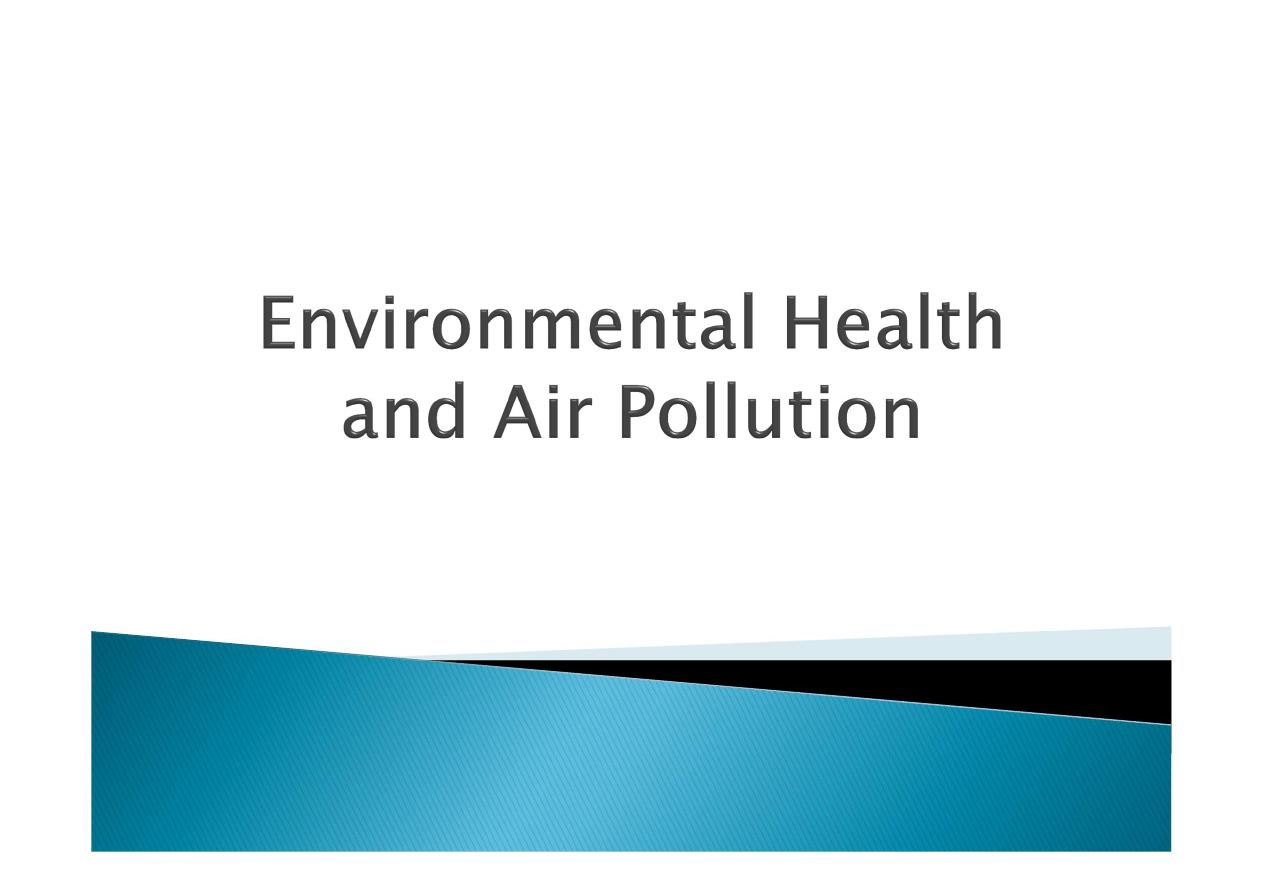
By
Dr. Ashraf Hussain
Msc., PhD. Community Medicine


All the external factors that can affect an
organism which may be other living
organisms called biotic factors or non living
variables (non biotic factors)such as rainfall,
temperature, day length, wind and ocean
currents and all form what is called the
ecosystem.
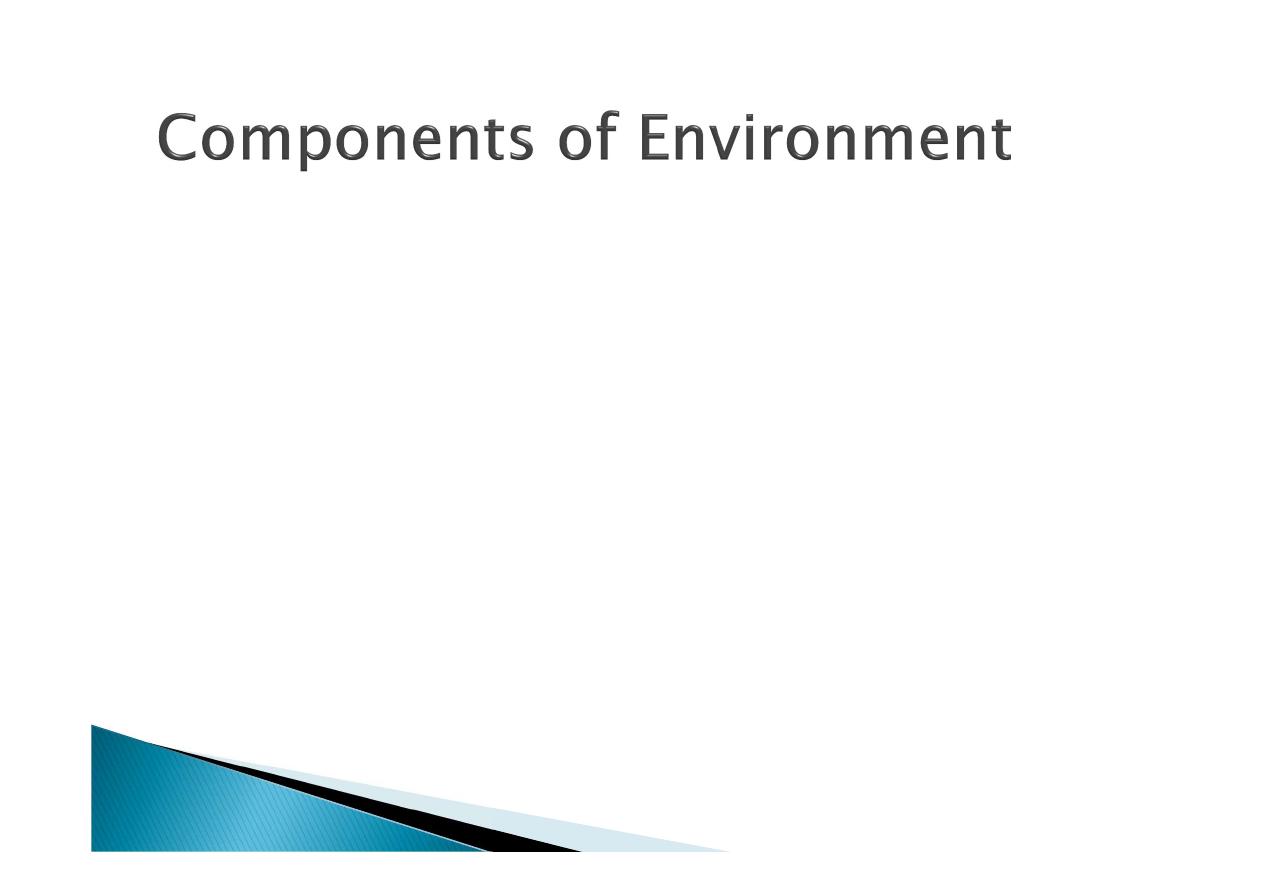
Physical: Air, Soil, Housing, climate,
Geography, heat, light, noise.
Biological: Viruses, Bacteria, Others insects,
rodents, animals and plants.
Social/ psychosocial/ Socioeconomic: Culture,
Values, customs, habits, morals, religions,
education, lifestyle, community life, health
services, social and political organizations
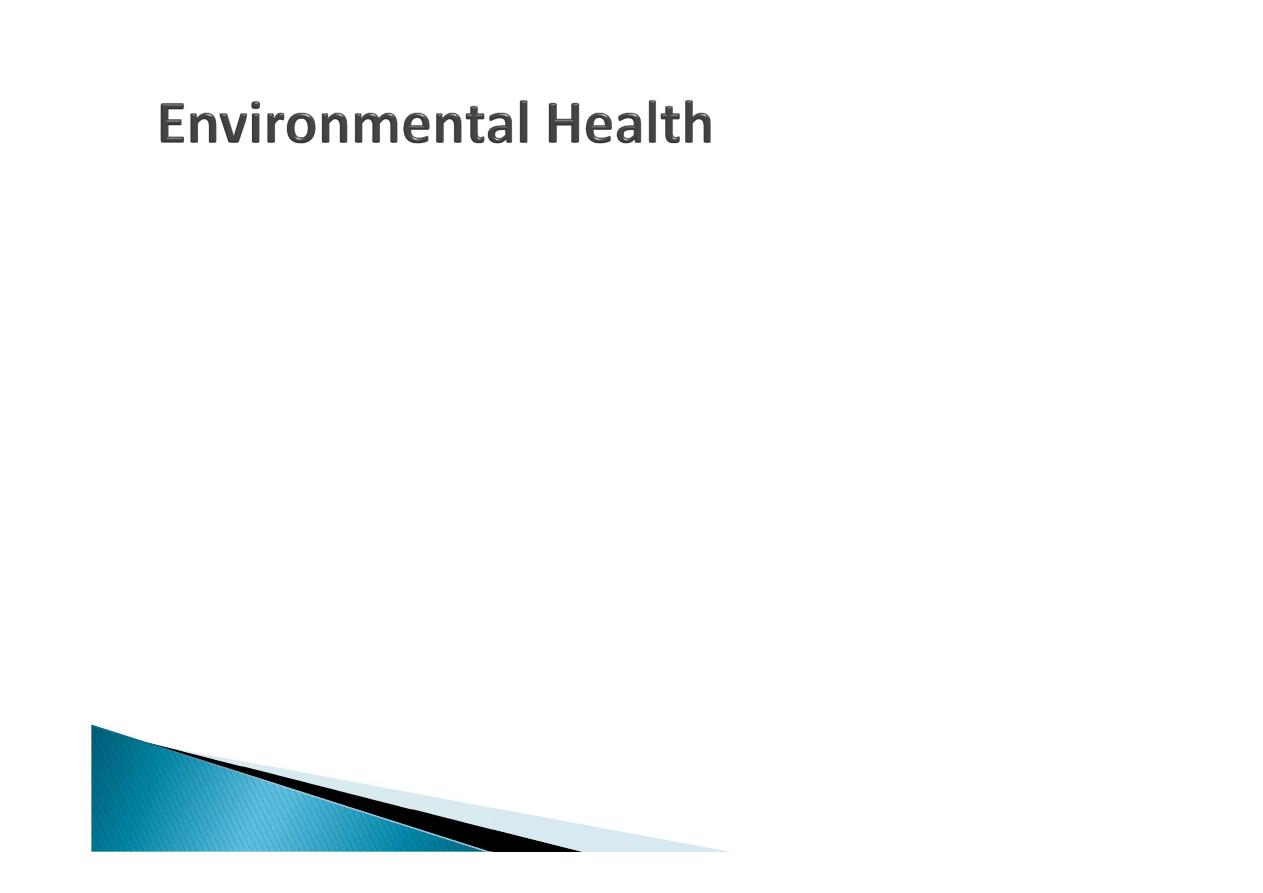
Is that aspect of public health that is
concerned with those forms of life,
substances and conditions in the
surroundings of man that may exert an
influence on human health and well-
being.
It also encompasses the theory and
practice of assessment, control and
prevention of those environmental
factors that can potentially affect
adversely the health of present and
future generations.
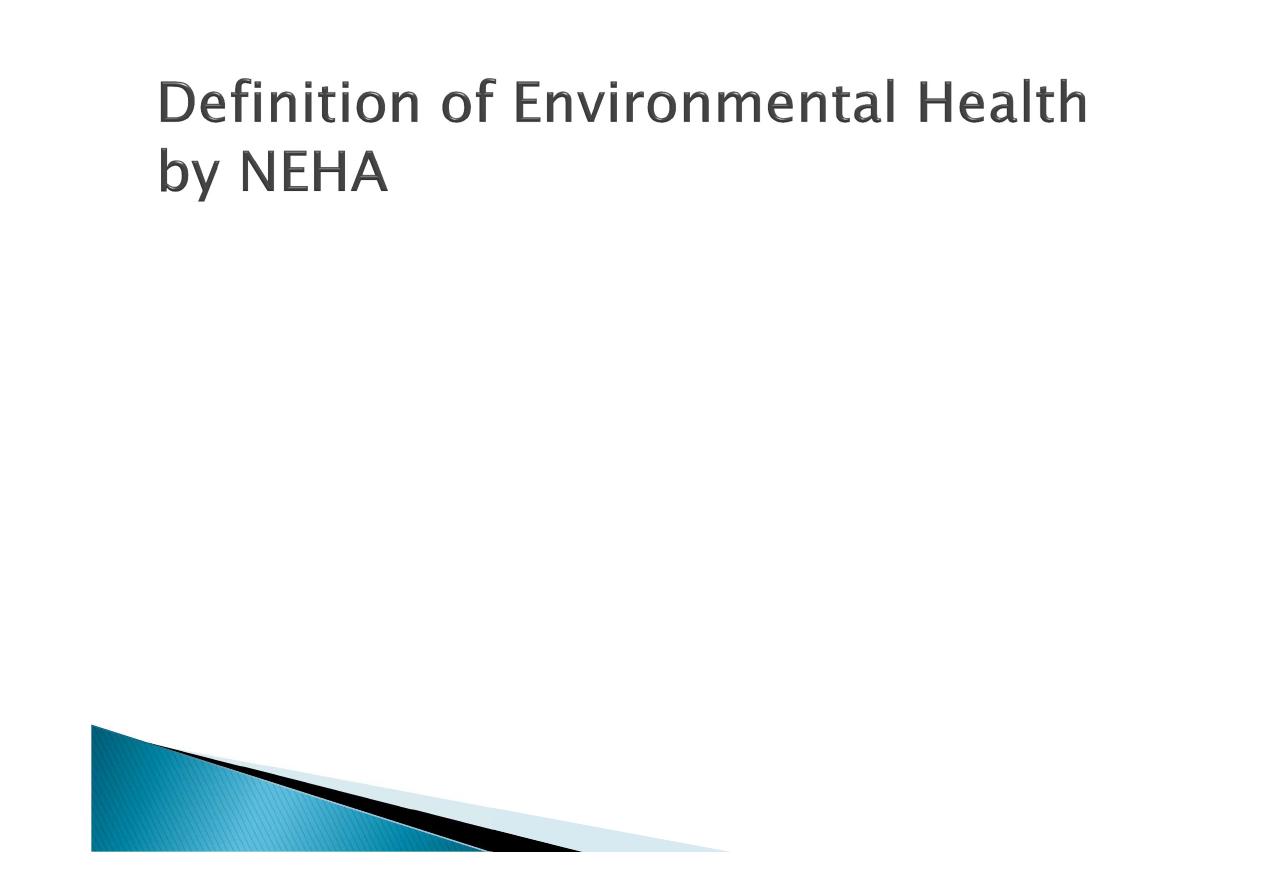
Environmental health is the science and
practice of preventing human injury and
illness and promoting well-being by
Identifying and evaluating environmental
sources and hazardous agents and
Limiting exposures to hazardous physical,
chemical, and biological agents in air, water,
soil, food, and other environmental media or
settings that may adversely affect human
health.

The key to man's health lies largely in his
environment.
much of man's ill-health can be traced to
adverse environmental factors such as water
pollution, soil pollution, air pollution, poor
housing conditions, presence of animal
reservoirs and insect vectors of diseases
which pose a constant threat to man's health.
Often man is responsible for the pollution of
his environment through urbanization,
industrialization and other human activities.

The last WHO estimates (In 2012) attributed
12.6 million deaths globally or 23% of all
deaths to the environment and environmental
pollution.
The fraction of the global burden of disease
(DALY) due to the environment is 22%

In children under five years, up to 26% of all
deaths could be prevented, if environmental
risks were removed.
The health of children under five and that of
adults between 50 and 75 years is most
affected by the environment.
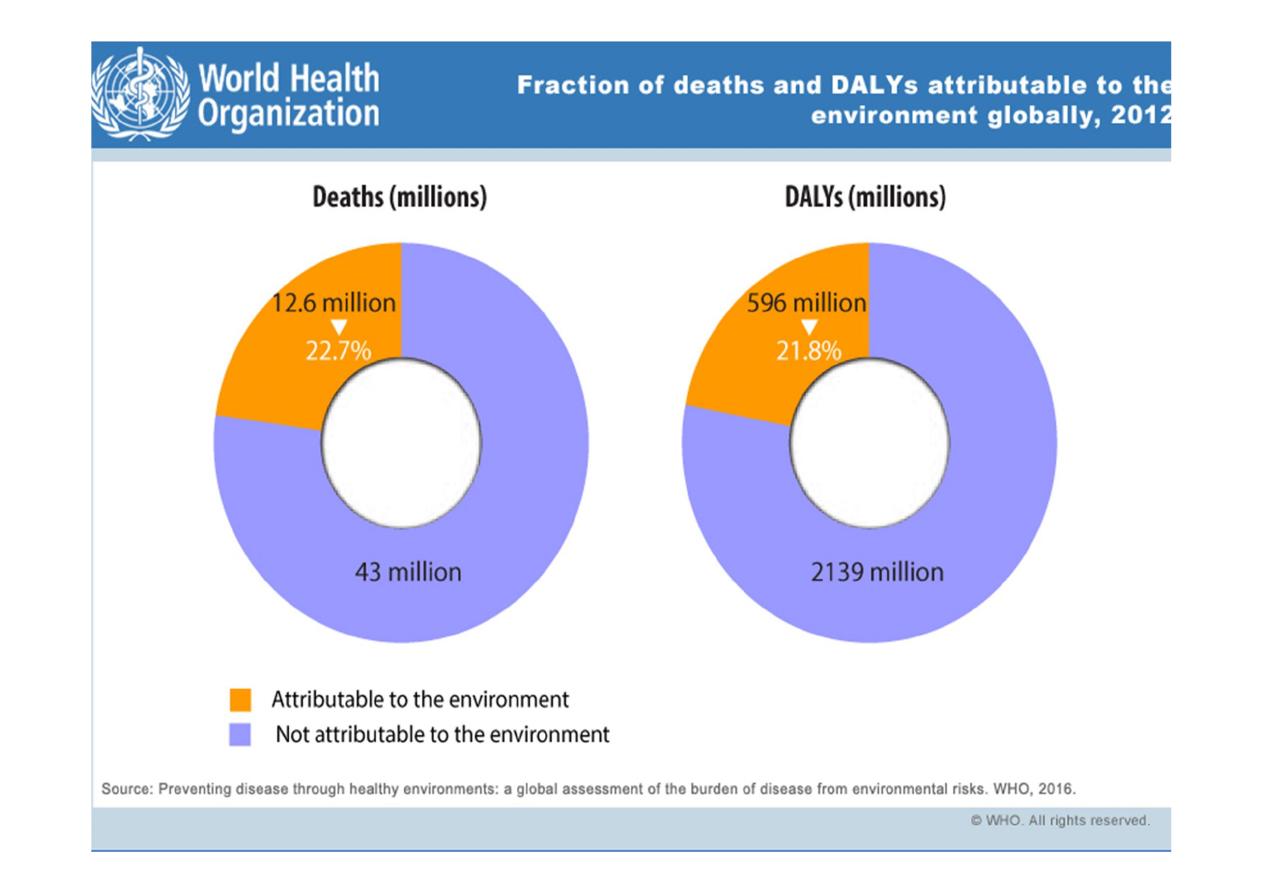

In children, the environment’s contribution to
infectious and parasitic diseases, neonatal
and nutritional diseases and injuries
is very
prominent.
In older adults, the fraction of
noncommunicable diseases
(NCDs) caused by
the environment becomes more important,
and that for injuries remains constant but
significant
The highest fraction of deaths and disease
that could be tackled through environmental
improvements is in low- and middle-income
countries
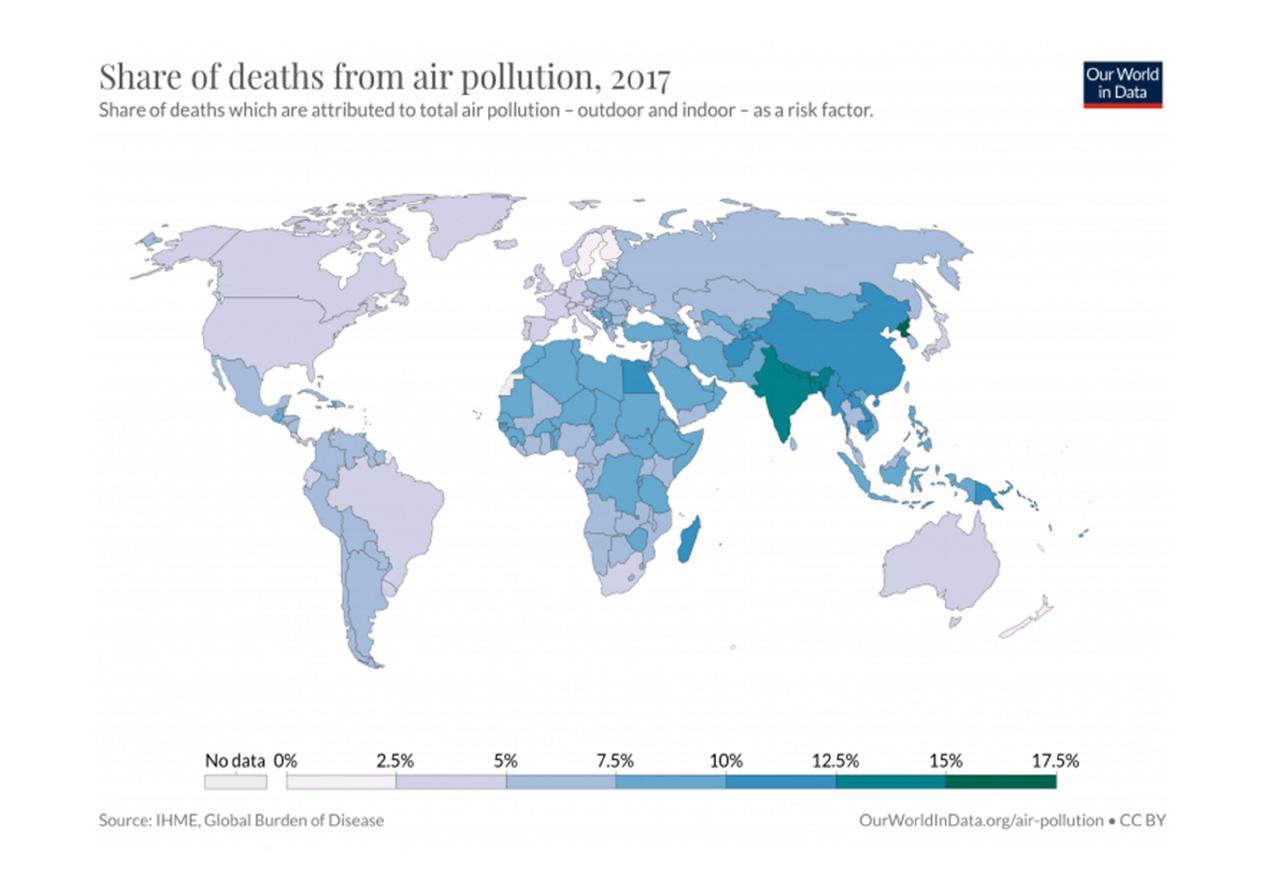
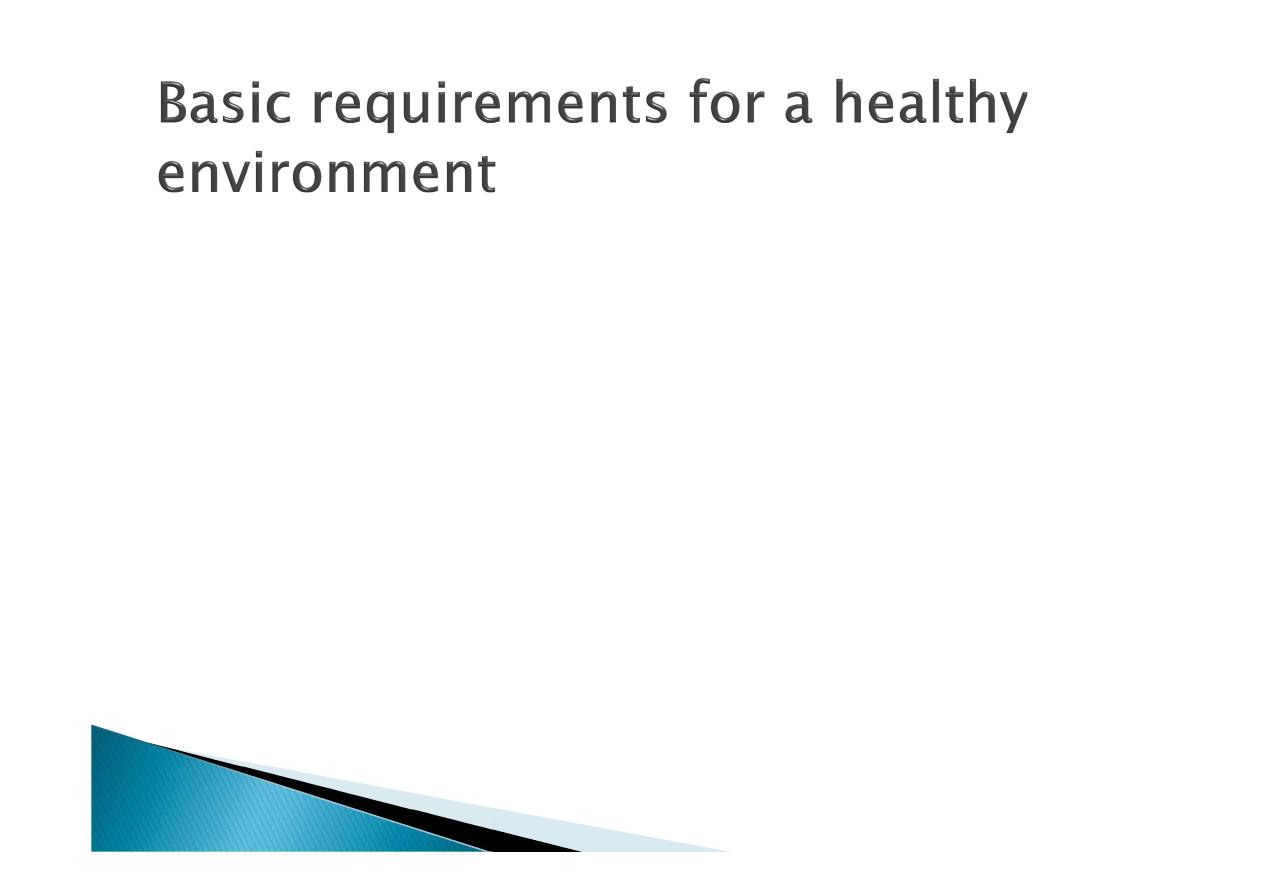
Clean air
Safe and sufficient water
Safe and adequate food
Safe and peaceful settlement
Stable global environment
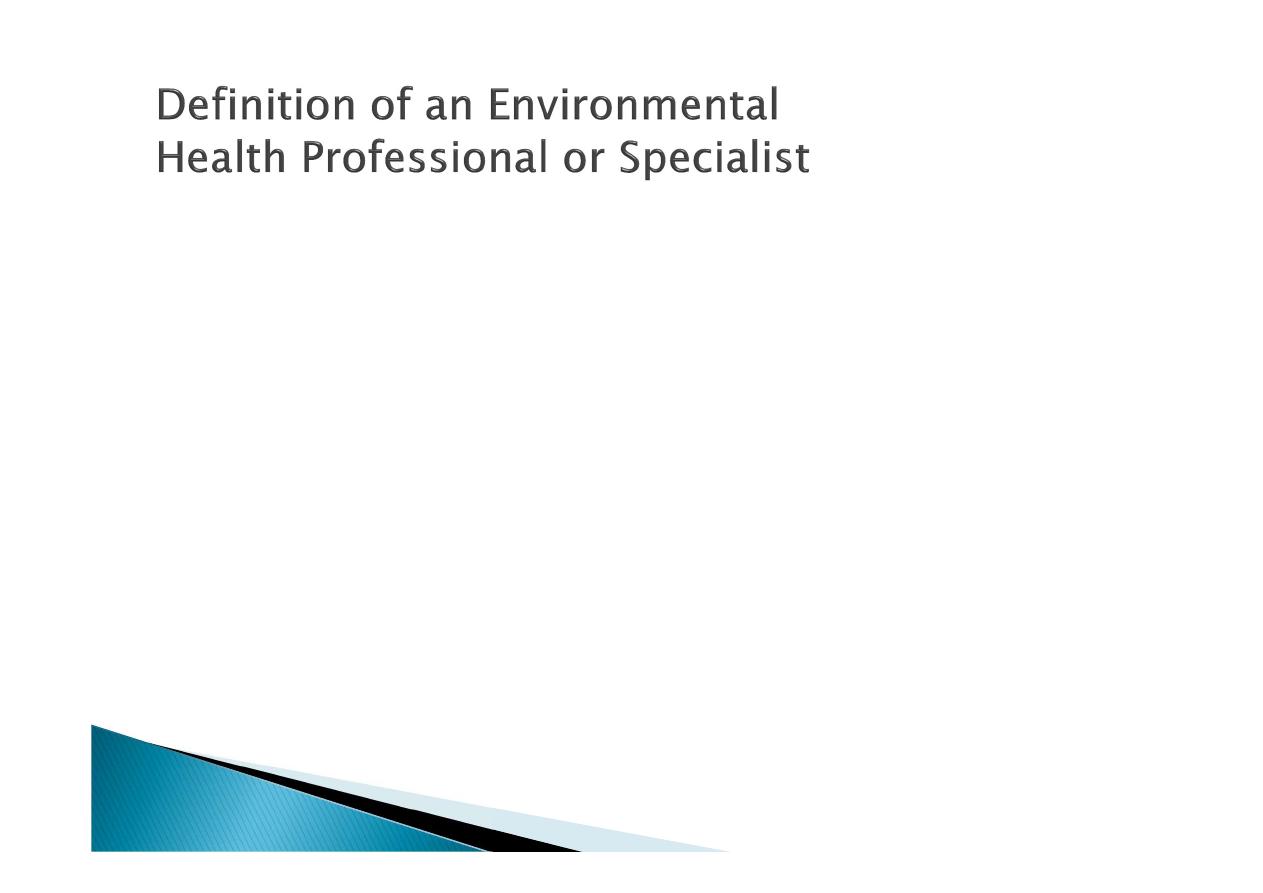
An environmental health professional or
specialist is a practitioner with appropriate
academic education and training
and registration or certification to
investigate, sample, measure, and assess
hazardous environmental agents in various
environmental media and settings;
recommend and apply protective
interventions that control hazards to health.

develop, promote, and enforce guidelines,
policies, laws, and regulations;
Review construction and land use plans and
make recommendations;
Interpret data and prepare technical
summaries and reports.

WHO's work on environmental health provides the
basis for global standards in environmental quality and
an effective investments for public health such as
air quality guidelines and
drinking-water quality guidelines.
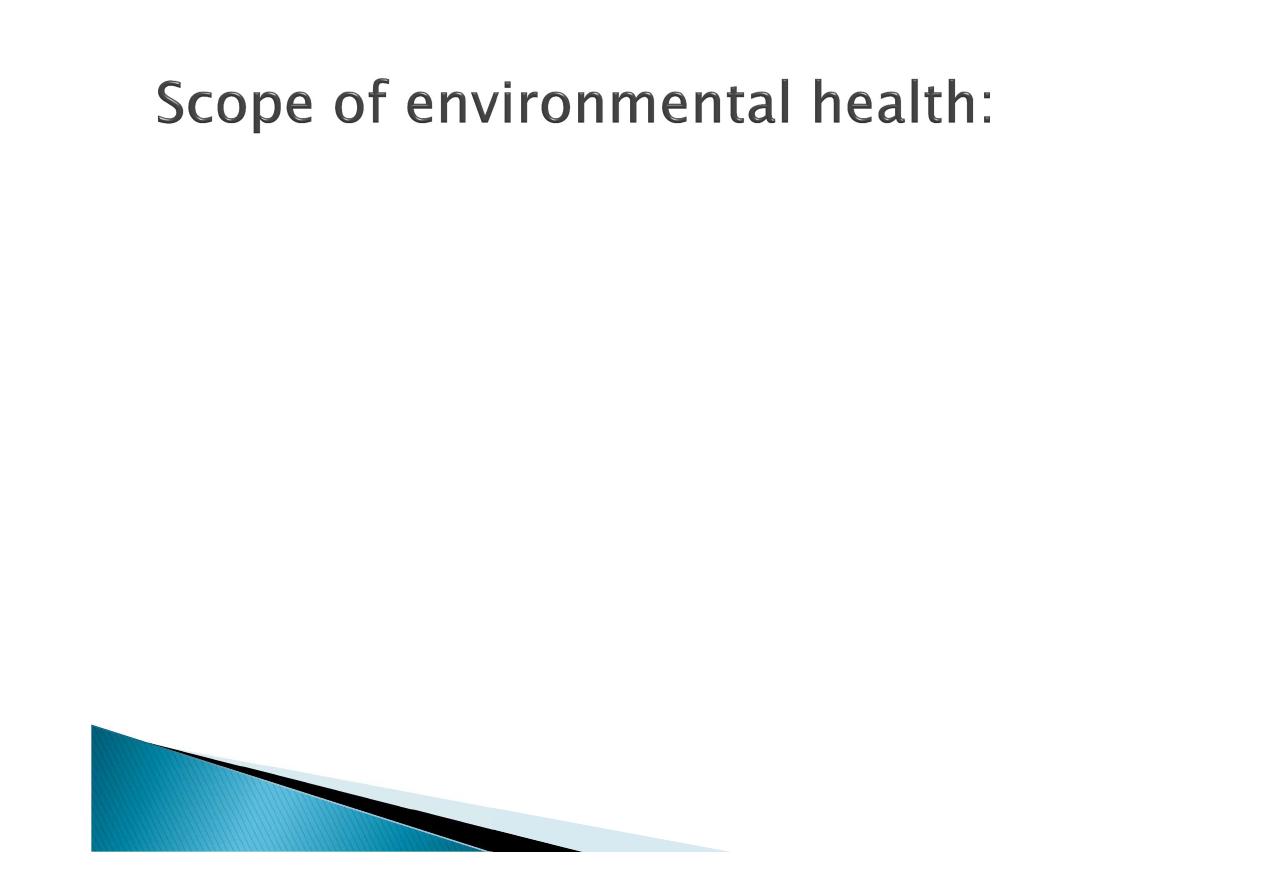
1. Water supplies
2. Waste water treatment
3. Waste management
4. Vector control
5. Prevention and control of land pollution
6. Food hygiene and safety
7. Air quality management
8. Environment radiation Hazards
9. Occupational health and safety
10.Environment Noise Management

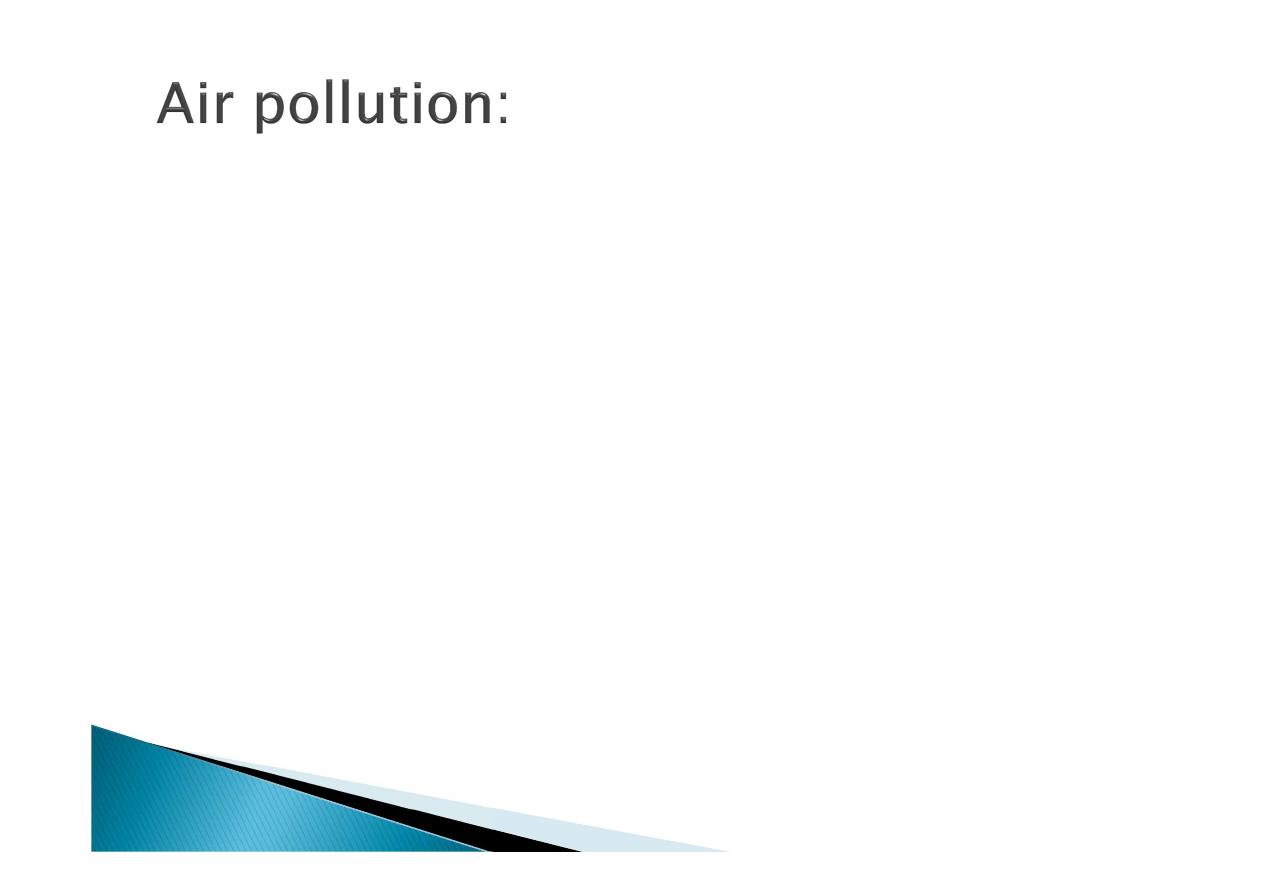
Definition
:
The presence in the atmosphere of one or
more air contaminants in such quantities that
are harmful to human, plant, or animal life, or
that interfere with the comfortable enjoyment
of life or the conduct of business or other
human activities

According to a WHO assessment,
more than 3 million premature deaths each year
can be attributed to the effects of ambient
(outdoor) air pollution.
4.3 million deaths every year as a result of
household exposure to smoke from dirty
cookstoves and fuels
92%of the world’s population lives in places where
air quality exceeds WHO guideline limits
More than half of this disease burden is borne by
the populations of developing countries.
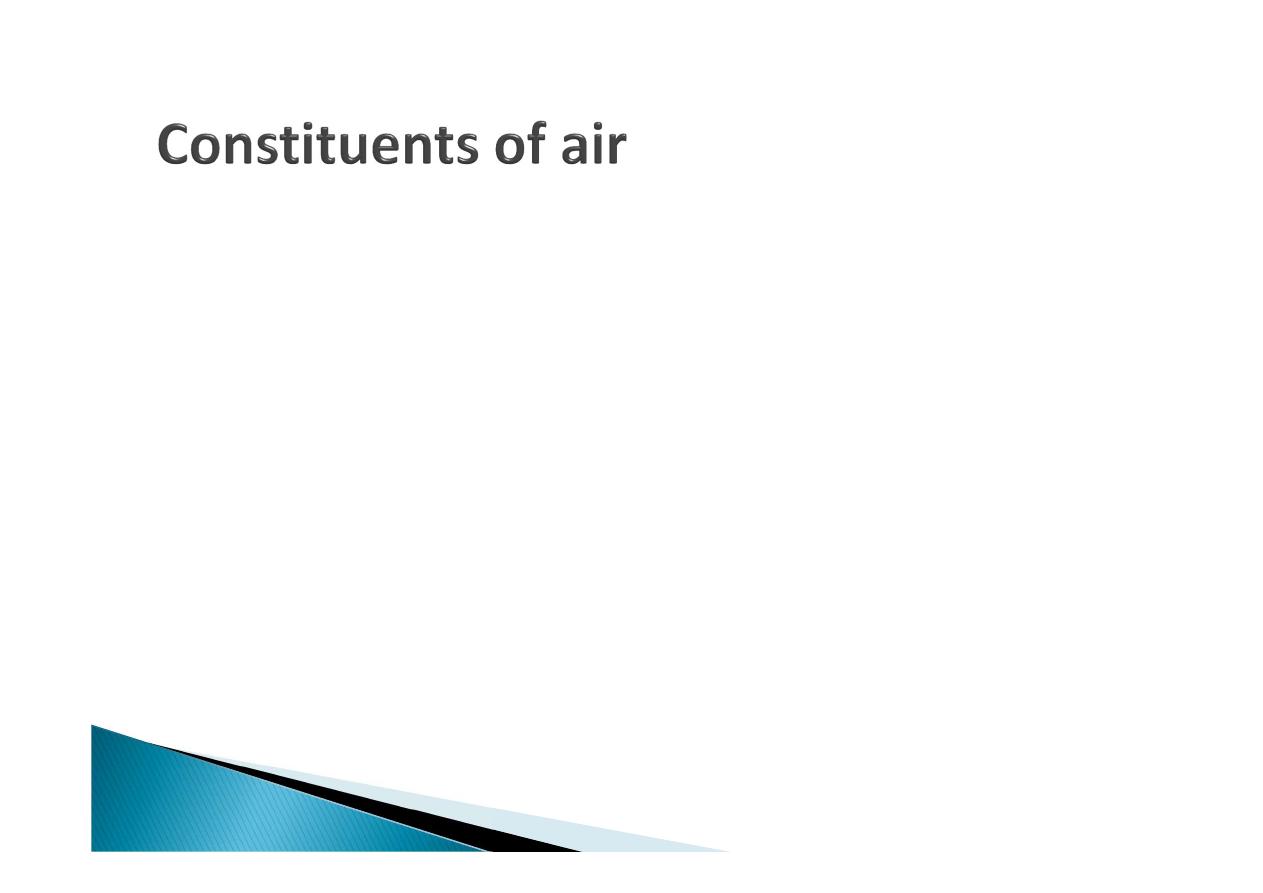
Nitrogen 78%,
Oxygen 21%,
CO
2
0.03%,
Argon, Neon, Helium, Krypton &Xenon <1%
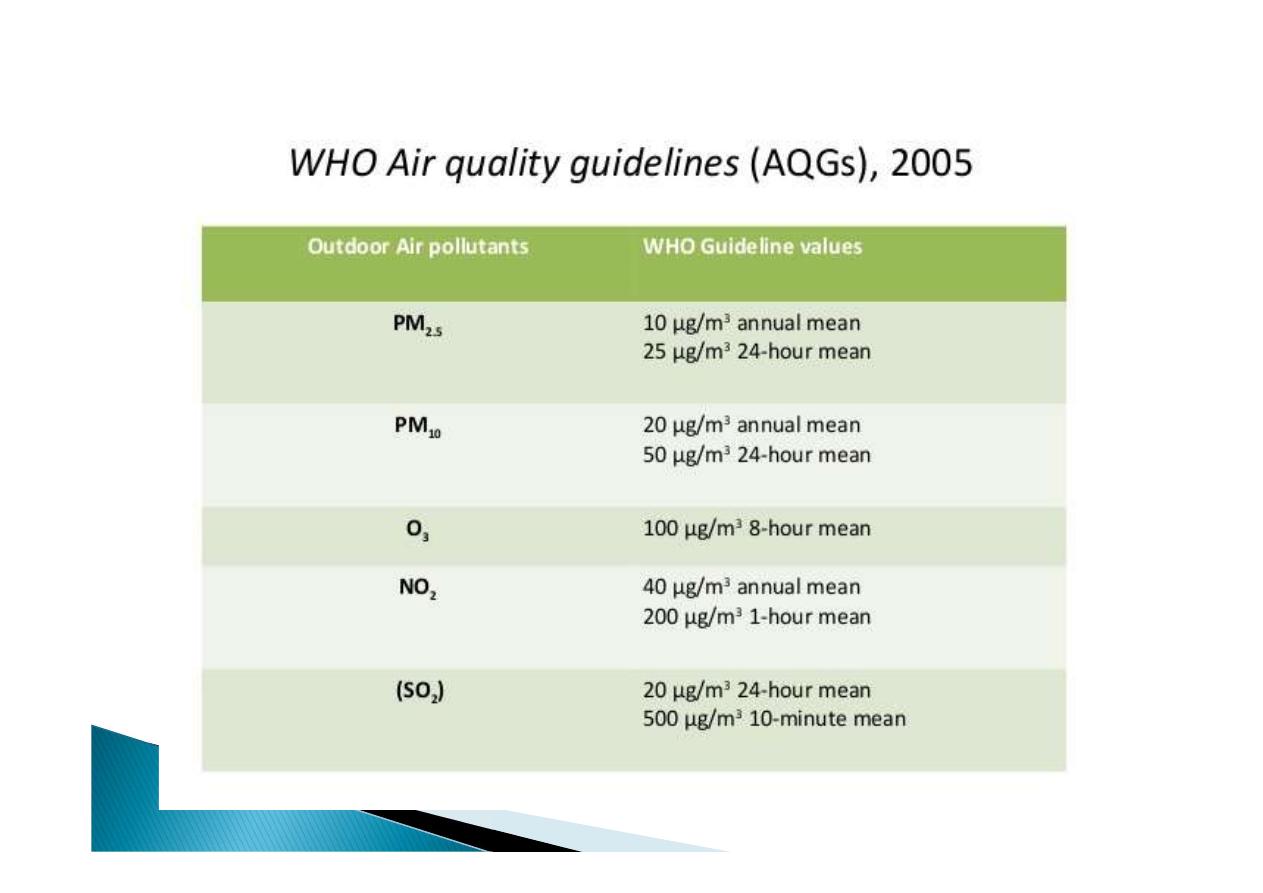

Factors contributing to air pollution;
1-Industrialization
2-Sharp increase in population
3-Urbanization
4-Mobility
5-Consumption of products

Criteria pollutants are the only air pollutants with
national air quality standards that define allowable
concentrations of these substances in ambient air.
They are carbon monoxide, nitrogen dioxide, sulfur
dioxide, ozone, particulate matter, and lead.
Exposure to these substances can cause health
effects, environmental effects, and property damage.
Health effects include heart or lung disease,
respiratory damage, or premature death.
Environmental effects include smog, acid rain, and
ozone depletion.
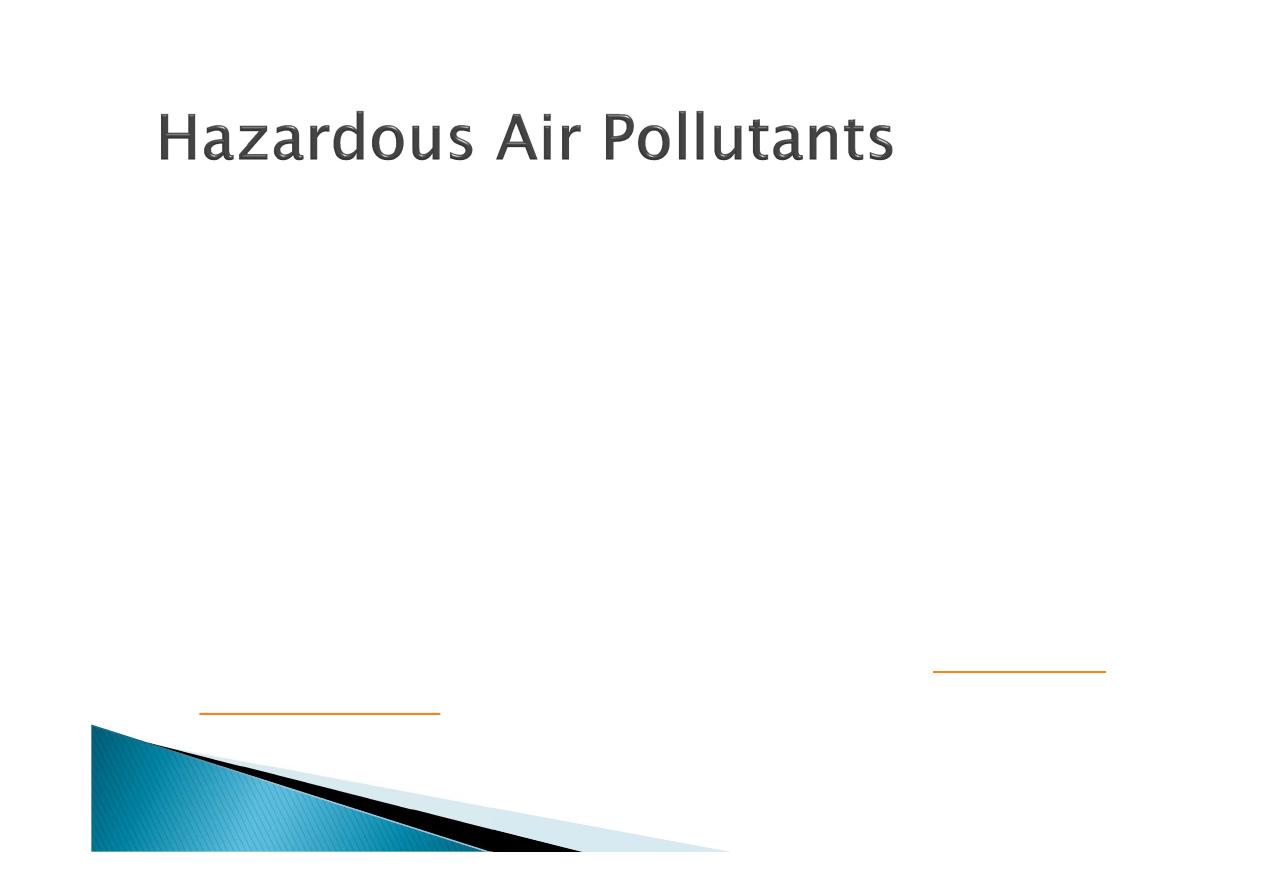
Hazardous air pollutants, also known as toxic air
pollutants or air toxics, are those pollutants that
are known or suspected to cause cancer or other
serious health effects, such as reproductive
effects or birth defects, or adverse environmental
effects.
Examples of air toxics include dioxin, asbestos,
toluene, and metals such as cadmium, mercury,
chromium, and lead compounds.
EPA is working with state, local, and tribal
governments to reduce air emissions of
187 toxic
air pollutants
to the environment.

It consists of a complex mixture of solid and liquid
particles of organic and inorganic substances
suspended in the air.
Affects more people than any other pollutant.
The major components of PM are sulfate, nitrates,
ammonia, sodium chloride, black carbon, mineral
dust and water.
The most health-damaging particles are those with a
diameter of 10 microns or less, (≤ PM
10
), which can
penetrate and lodge deep inside the lungs.
Chronic exposure to particles contributes to the risk
of developing cardiovascular and respiratory
diseases, as well as of lung cancer.
PM
10
20 μg/m
3
annual mean
50 μg/m
3
24-hour mean
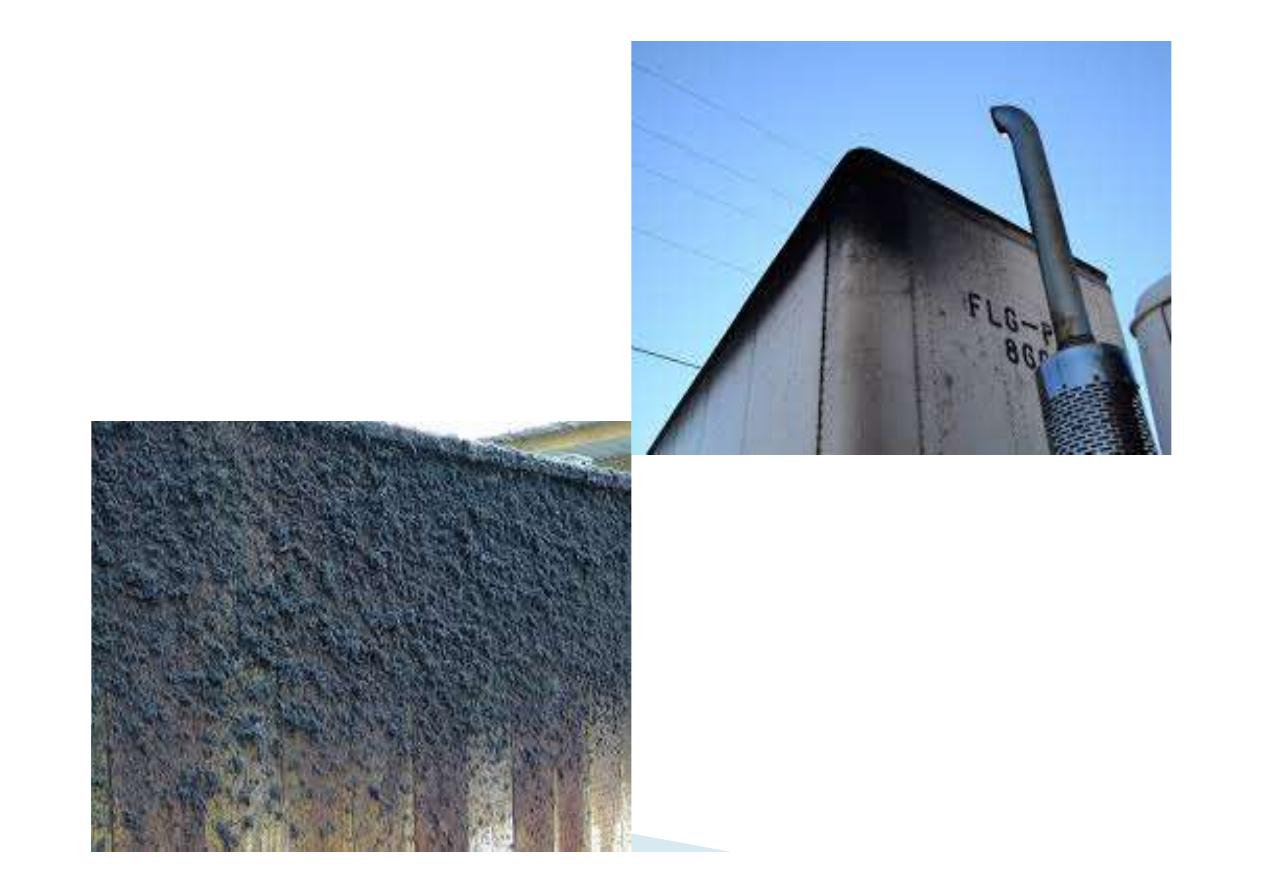

Smog (a combination of the words "smoke" and
"fog") forms when sunlight acts on a cocktail of
pollutant gases such as nitrogen and sulfur
oxides, unburned hydrocarbons, and carbon
monoxide; that's why it's sometimes called
photochemical smog
One of the most harmful constituents of smog is
the ozone, which can cause serious breathing
difficulties and even, sometimes, death.
When smog is rich in ozone, it tends to be a
blueish color, otherwise it's more likely to be
brown.
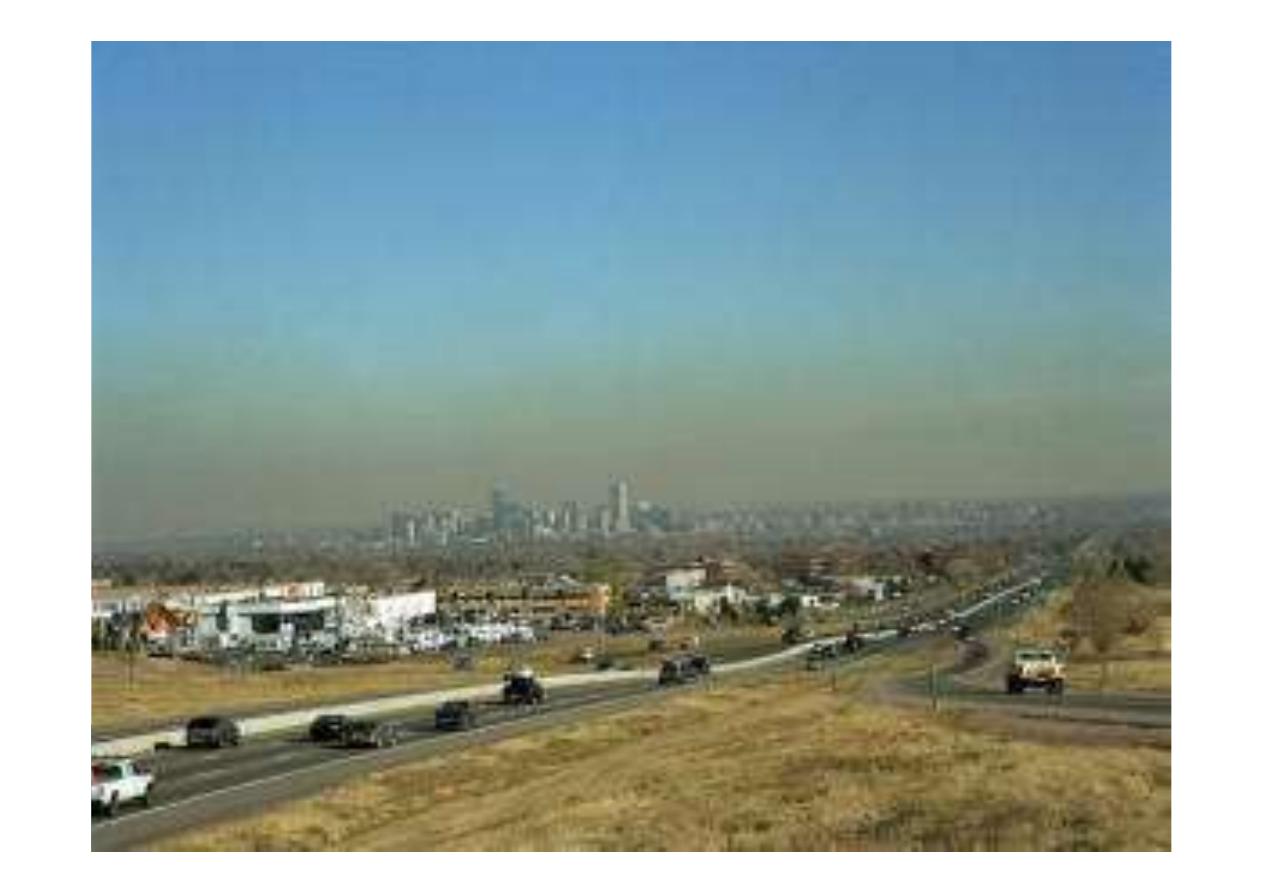
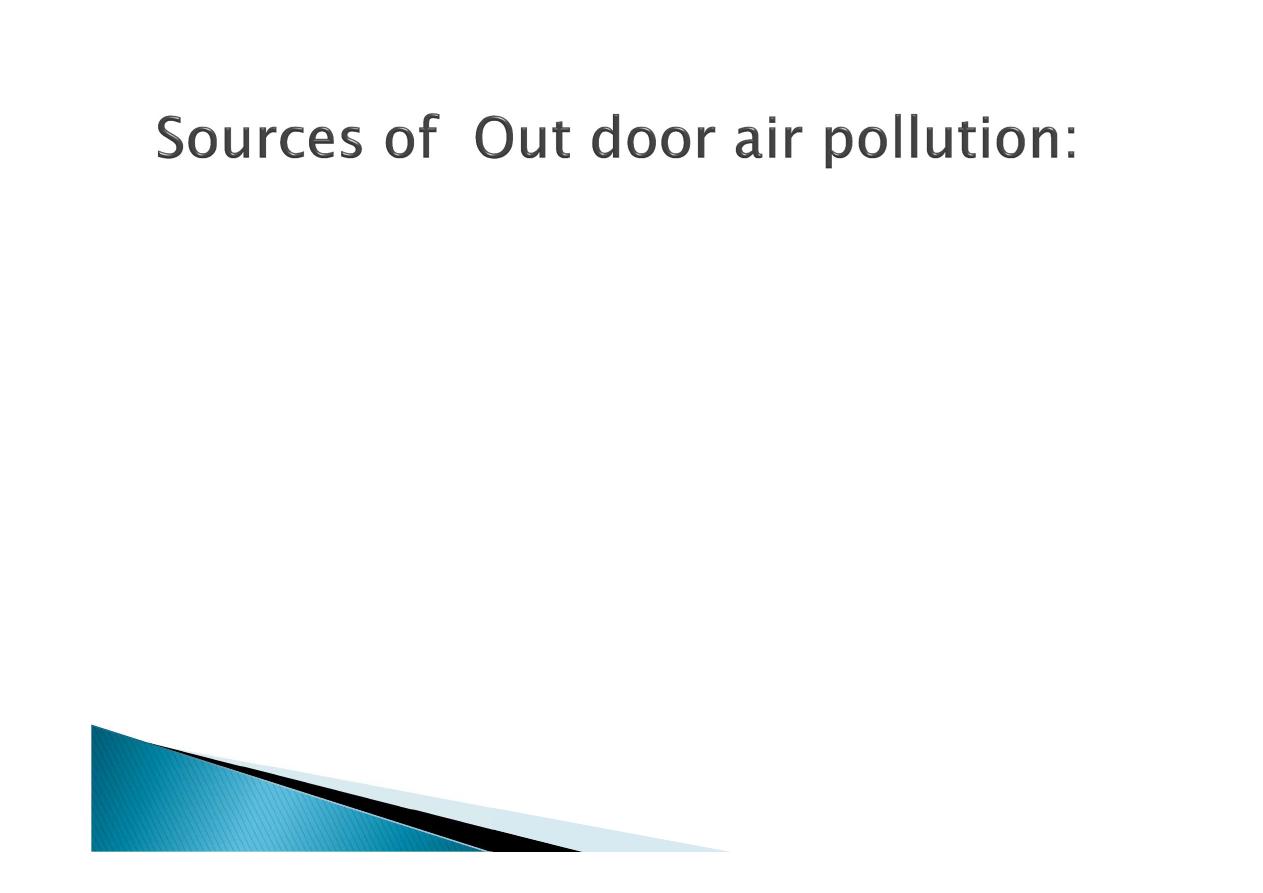
1-Natural sources:
e.g. Fog, dust, gases from fissures and cracks
in the earth, volcanoes producing ash, gas,
fumes, and smoke, from forest fires, pollens
from plants and weeds.
Effects: The most important is pollen. it
produce hay fever and allergies.
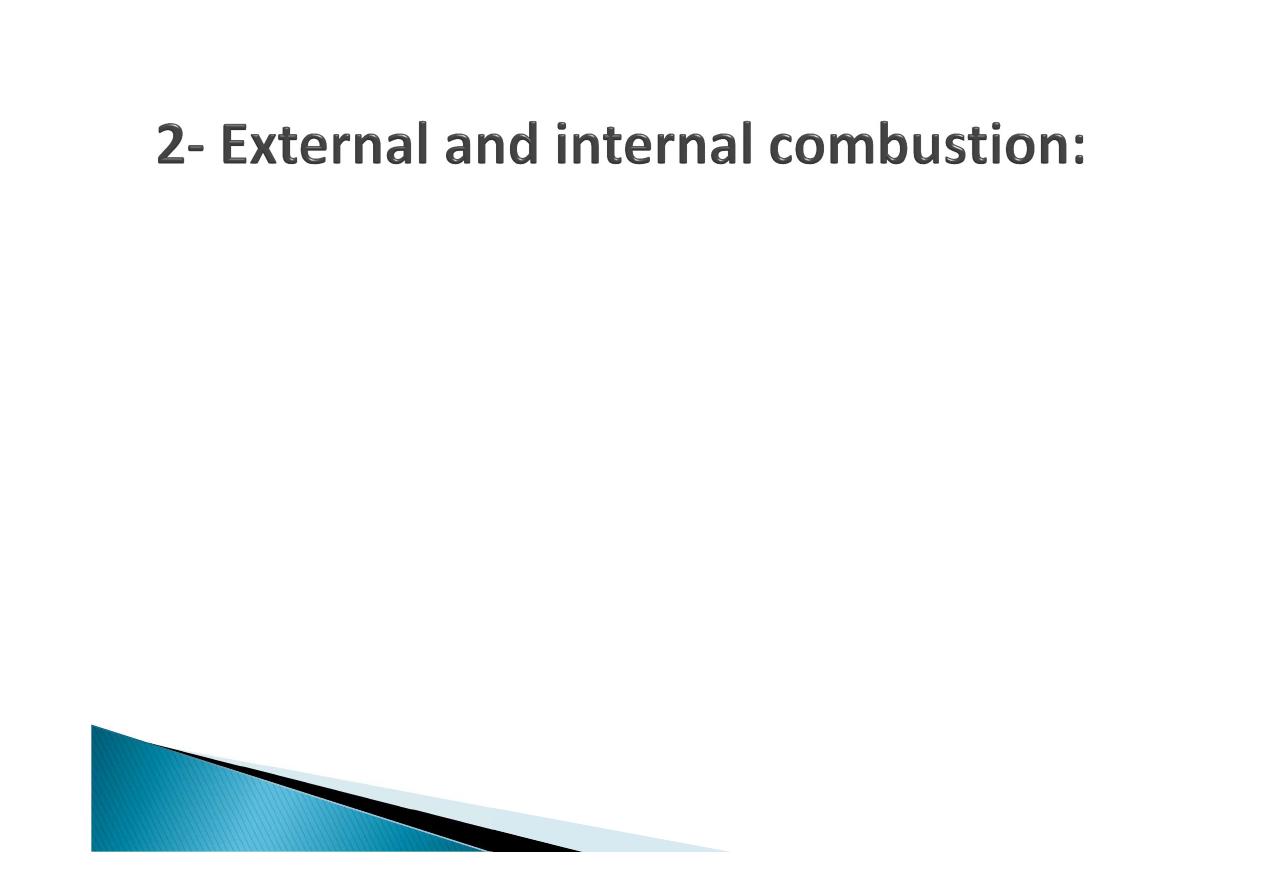
Takes place in furnaces and boilers and engines.
The furnace is a combustion chamber in which air and
fuel are mixed and heat is applied to release large
quantities of stored energy from the fuel.
Incomplete combustion results from too much or too
little air, too low temperature, and inadequate time
allowed for the burning process.

Inadequate quantities of air in the combustion process
results in emission of CO instead of CO
2
, unburned
gasoline and a variety of hydrocarbons.
The extremely hot air in the engine converts the nitrogen
and oxygen of the air into the nitrogen oxide that helps
produce photochemical smog.

Attrition is wearing or grinding down by friction.
Attrition occurs from the process of grinding, spraying,
demolishing or from simply walking or driving.
In any situation where friction is present, some portion
of the surface in contact will break off in minute
particles into the atmosphere.

“Change of state of liquid into a gas at any temperature
below its boiling point”. Odor type pollution will result
e.g. emission of organic solvents from dry cleaning
plants.

Solid waste garbage, refuse, sludge, and other
discarded solid materials.
They result from industrial, commercial, agricultural, and
community activities.
Incinerations are used to reduce the volume of these
materials.
The inefficient incinerators emit fly ash, smoke, gases,
and odors.
Open burning causes the emission of particulates, CO,
HC, SO
x
, and odor.

Depends on type of industry in the
area;
◦
Petroleum refineries: Emit HC,
hydrogen sulfide, waste gases,
smoke, CO, No
x
, SO
2
, and other
odorous gases.

◦
Power plants: They generate
electricity by burning coal, and oil
that may contain sulfur as an
impurity. The emission from power
plants include; CO, CO
2
, NO
x
, HC,
and particulate matters

Factors to be considered when determining human
exposure;
-What and how much is emitted?
-Seasonal and weather conditions.
-How much a person inhales?
-Personal susceptibility.
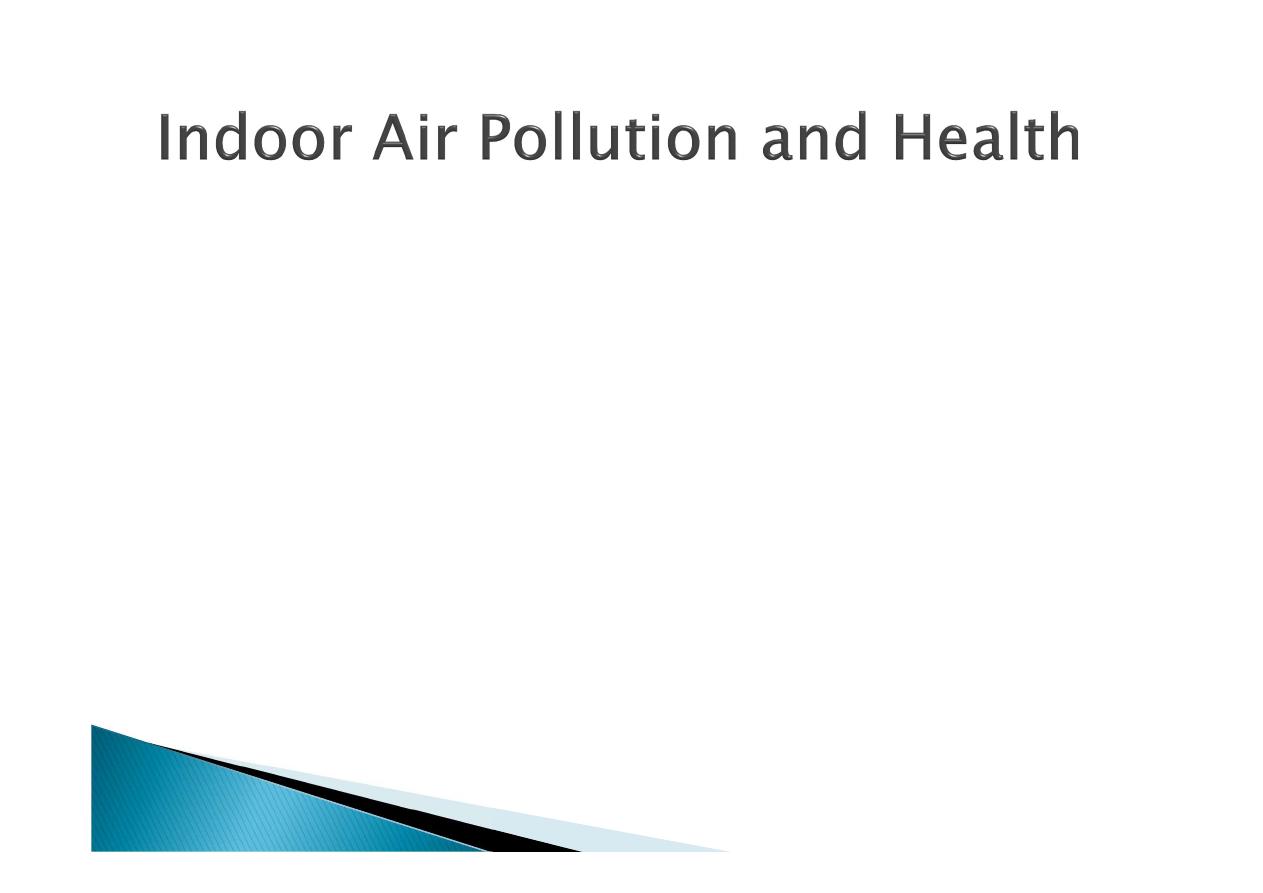
Indoor Air Quality (IAQ) refers to the air
quality within and around buildings and
structures, especially as it relates to the
health and comfort of building occupants.
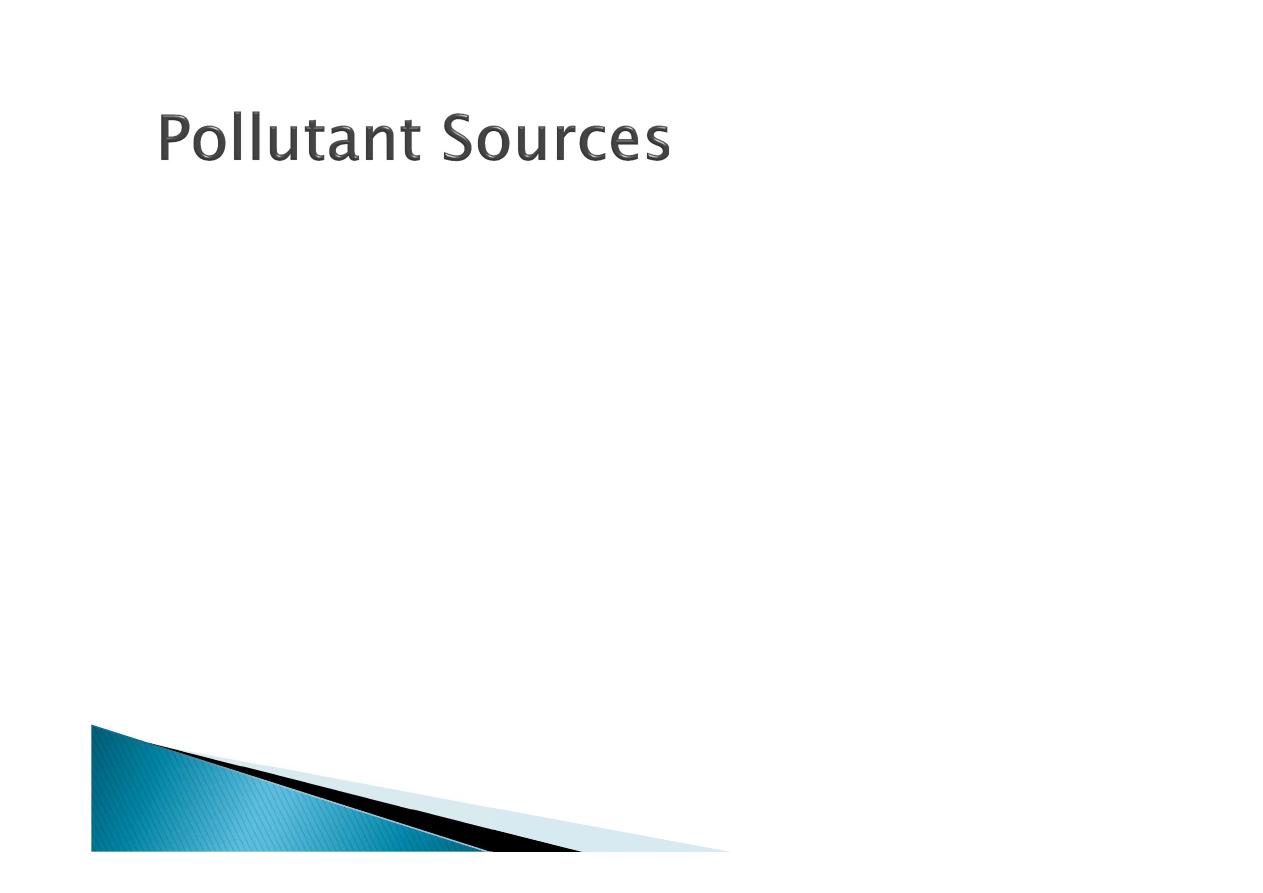
There are many sources of indoor air
pollution. These can include:
Fuel-burning combustion appliances
Tobacco products
Products for household cleaning and
maintenance, personal care, or hobbies
Central heating and cooling systems
and humidification devices
Excess moisture

Building materials and furnishings as
diverse as:
◦
Deteriorated asbestos-containing
insulation
◦
Newly installed flooring, upholstery or
carpet
◦
Cabinetry or furniture made of certain
pressed wood products
Outdoor sources such as:
◦
Radon
◦
Pesticides
◦
Outdoor air pollution.
